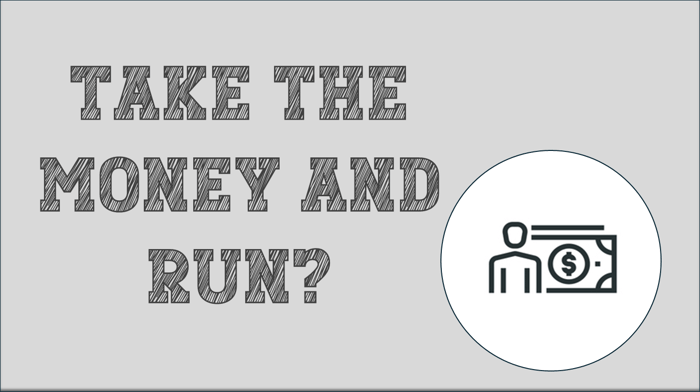The small green leaf of the Butterwort plant looks harmless enough.
Tiny water droplets on the leaf actually make it look downright succulent to insects passing by.
Except those aren’t water droplets. They’re deadly secretions from the plant’s leaf.
It turns out the Butterwort is carnivorous. It’s a meat eating plant.
Once an insect lands, bad things start to happen. I’ll spare you the details.
So why am I telling you about the Butterwort plant on a financial planning website? Read on…
HIDING IN PLAIN SITE
95% of investment advisory firms charge their clients about 1% of their portfolio. And that 1% looks just as harmless as the Butterwort’s small green leaf.
While paying a 1% management fee to a financial advisor won’t kill you, it certainly can be a lot more dangerous than it looks.
My instincts told me that there was something amiss with the 1% fee, so I studied it. The more I looked into it, the more I realized that little 1% fee was amazing for financial advisors…but not for clients.
In fact, there are 3 major problems with this fee.
PROBLEM 1: SNEAKY SMALL
Whoever came up with the 1% fee must have been a brilliant marketer, psychologist, or both. They’ve done a simply incredible job of making this fee seem like a great deal.
But in reality, the 1% fee is actually pretty sneaky.
Scientists and psychologists would say the 1% fee has low “salience.” This just means that it’s hard for us to see. Since that 1% fee appears tiny relative to our entire portfolio, our brains tend to ignore it. It becomes invisible.
But what if we took the same 1% and reframed it?
- On a $2 million portfolio, that 1% fee represents $20,000 per year. It doesn’t seem quite as small now, does it?
- If your gross annual return is 6%, that 1% fee represents one-sixth of your portfolio growth. In other words, your advisor is taking 16 cents of every dollar your portfolio earns.
- If your net after-tax annual return is 4%, now that 1% fee represents one-fourth of your growth. Your advisor is taking 25 cents on the dollar.
By simply re-framing that 1% fee and showing what else it represents, we can see how big it really is. All of a sudden it looks a lot more salient!
But you need to do this re-framing for yourself because no percentage advisor is going to do it for you.
And as big as $20,000 looks, look what happens over time. For a $2 million portfolio growing at 5% over 30 years, that little 1% fee works out to $1.2 million.
I’m sure he’s a nice guy, but $1.2 million? That’s just crazy.
Yet people pay it every day. Even though a flat fee of $7,500 would only cost you $225,000 during that same time period. The flat fee doesn’t grow over time.
Which brings us to the next problem, that your advisor’s fee grows along with your portfolio.
PROBLEM 2: BUILT ON A LIE
The percentage fee is built on a lie.
The lie is that large portfolios take more effort to manage than smaller portfolios. It turns out this just isn’t true.
Consider examples from other parts of your life:
- If your income doubled, would you expect your accountant to charge you twice as much to prepare your taxes? No way.
- If your net worth doubled, would you expect an estate planning attorney to charge you twice as much to prepare your estate planning documents? Not in a million years.
- If you have a bigger TV than your neighbor, would you expect the cable company to charge you more for the same channels your neighbor has? Never.
So why would it make sense for your advisor to double his fee just because your portfolio doubled?
For some reason, the industry has just asserted that advisors deserve to share in the growth of their clients’ portfolios. And unfortunately, clients by-and-large have not challenged this.
But when you consider this payment model in the broader context of how you pay for other services, it just starts to look silly.
Then when you consider that the work is no different on a $2 million portfolio compared to a $1 million portfolio you start to see how unfair percentage pricing really is.
(You might be thinking that I’m ignoring the possibility that your advisor is a brilliant stock picker. If he is, then maybe he should be rewarded for his market-beating returns. But if you actually believe an advisor can consistently pick market-beating stocks, I don’t think I can help you.)
PROBLEM 3: RIFE WITH CONFLICTS
Although the actual fees some people pay percentage advisors can be mind boggling, perhaps the most troubling part of the percentage fee are the conflicts of interest.
Let’s look at some of the most common:
Rolling over your 401K:
You’re trying to decide whether to roll over your $1 million 401-K to an IRA. Your percentage advisor has a conflict of interest because he stands to benefit significantly if he recommends the rollover.
Delaying Social Security:
You’re trying to decide whether to delay taking Social Security. Your percentage advisor has a conflict of interest because he stands to benefit significantly if he recommends you take social security early (and avoid tapping your portfolio).
Starting a business:
You’re considering starting a business. Your percentage advisor has a conflict of interest, because he stands to benefit if he recommends against using part of your capital to invest in your new business.
Buying an annuity:
You’re considering purchasing an annuity to generate retirement income. Your percentage advisor has a conflict of interest, because he stands to benefit if he recommends against the annuity.
Paying off your mortgage:
You’re considering paying off your mortgage. Your percentage advisor has a conflict of interest because he stands to benefit if he recommends against paying off your mortgage.
Buying a vacation home:
You’re deciding whether or not to purchase a vacation home with some of the money in your portfolio. Your percentage advisor has a conflict of interest because he stands to benefit if he recommends against buying the vacation home.
Giving:
You’re wondering whether to make large gifts to charity now. Your percentage advisor has a conflict of interest because he stands to benefit if he recommends against the gifts.
I’m sure you’re thinking that you would only work with an ethical financial advisor. After all, ethical people wouldn’t let a conflict of interest affect the advice they give.
I want to agree with you. I really do.
But it isn’t that simple.
You see, there’s a reason that judges recuse themselves and Directors step down from boards.
The reason is that it is very hard to tell whether a conflict of interest is affecting the advice we offer. (There are proven psychological reasons for this, that I’d be happy to discuss with you.)
And since it isn’t practical for a financial advisor to recuse himself every time his clients asks for advice on something that could impact the advisor’s wallet… shouldn’t the industry be searching for a compensation model that’s more fair to clients?
THERE MUST BE A BETTER WAY
Hopefully, I’ve convinced you that the seemingly harmless 1% fee has several major problems for clients.
But as a client, what are you supposed to do about it? It’s not like the industry is going to change overnight. Especially with how incredibly lucrative the 1% fee is for advisors.
However, there is hope that the tides are beginning to turn. There are currently a few hundred advisors across the country who have rejected the prevailing percentage approach.
In my practice, for example, I charge a fixed flat fee of $12,500 per year. This flat rate includes two ongoing services – investment management and financial planning.
I will never charge a percentage and my rates never change regardless of how large your portfolio grows.
In designing my service offering and fee schedule, I worked hard to avoid the 3 problems that I walked you through above.
But there are other fee structures out there as well. If you’d like to learn more about them, download my free report 4 Ways to Pay for Financial Advice. Give me just a few minutes, and I’ll make you a much savvier client for years to come!
If you have additional questions, please feel free to reach out!






